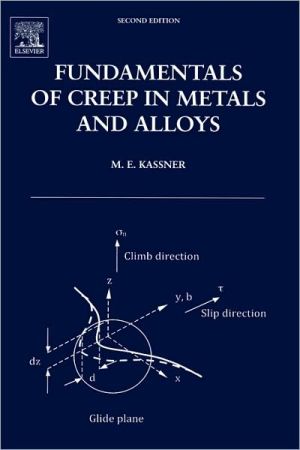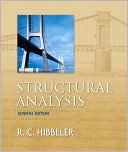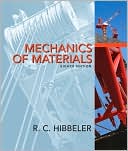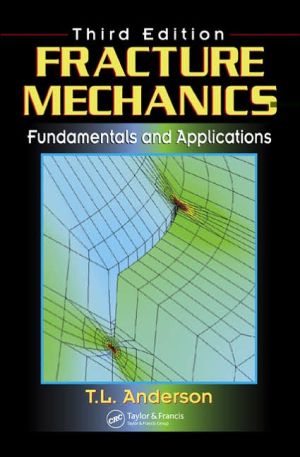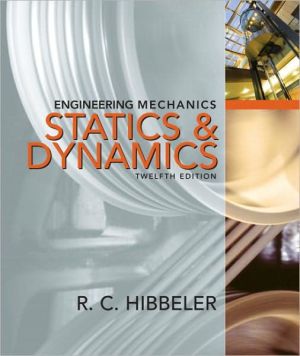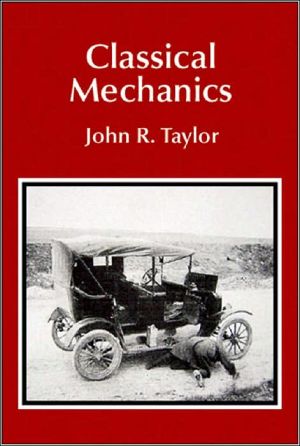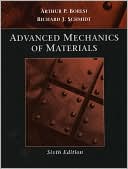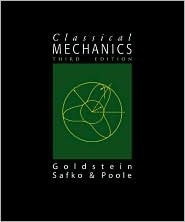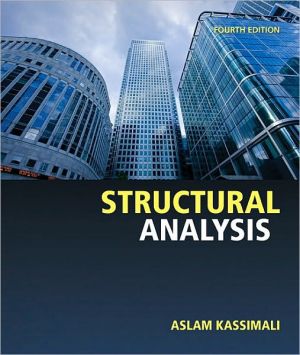Fundamentals of Creep in Metals and Alloys
Creep refers to the slow, permanent deformation of materials under external loads, or stresses. It explains the creep strength or resistance to this extension. This book is for experts in the field of strength of metals, alloys and ceramics. It explains creep behavior at the atomic or “dislocation defect” level. This book has many illustrations and many references. The figure formats are uniform and consistently labeled for increased readability. This book is the second edition that updates...
Search in google:
Creep refers to the slow, permanent deformation of materials under external loads, or stresses. It explains the creep strength or resistance to this extension. This book is for experts in the field of strength of metals, alloys and ceramics. It explains creep behavior at the atomic or “dislocation defect” level. This book has many illustrations and many references. The figure formats are uniform and consistently labeled for increased readability. This book is the second edition that updates and improves the earlier edition.• Numerous line drawings with consistent format and units allow easy comparison of the behavior of a very wide range of materials. • Transmission electron micrographs provide direct insight into the basic microstructure of metals deforming at high temperatures.• Extensive literature review of about 1000 references provides an excellent overview of the field.
Fundamentals of Creep in Metals and Alloys\ \ By Michael E. Kassner \ ELSEVIER\ Copyright © 2009 Elsevier Ltd.\ All right reserved.\ ISBN: 978-0-08-091499-2 \ \ \ Chapter One\ Introduction M.E. Kassner \ 1.1 Description of Creep 3 1.2 Objectives 8\ Introduction\ 1.1 DESCRIPTION OF CREEP\ Creep of materials is classically associated with time-dependent plasticity under a fixed stress at an elevated temperature, often greater than roughly 0.5 Tm, where Tm is the absolute melting temperature. The plasticity under these conditions is described in Figure 1 for constant stress (a) and constant strain-rate (b) conditions. Several aspects of the curve in Figure 1 require explanation. First, three regions are delineated: Stage I, or primary creep, which denotes that portion where [in (a)] the creep-rate (plastic strain-rate), [??] = dε/dt is changing with increasing plastic strain or time. In Figure 1(a) the primarycreep-rate decreases with increasing strain, but with some types of creep, such as solute drag with "3-power creep," an "inverted" primary occurs where the strain-rate increases with strain. Analogously, in (b), under constant strain-rate conditions, the metal hardens, resulting in increasing flow stresses. Often, in pure metals, the strain-rate decreases or the stress increases to a value that is constant over a range of strain. The phenomenon is termed Stage II, secondary, or steady-state creep. Eventually, cavitation and/or cracking increase the apparent strain-rate or decrease the flow stress. This regime is termed Stage III, or tertiary creep, and leads to fracture. Sometimes, Stage I leads directly to Stage III and an "inflection" is observed. Thus, care must sometimes be exercised in concluding a mechanical steady-state (ss).\ The term "creep" as applied to plasticity of materials likely arose from the observation that at modest and constant stress, at or even below the macroscopic yield stress of the metal (at a "conventional" strain-rate), plastic deformation occurs over time as described in Figure 1(a). This is in contrast with the general observation, such as at ambient temperature, where, a material deformed at, for example, 0.1–0.3 Tm, shows very little plasticity under constant stress at or below the yield stress, again, at "conventional" or typical tensile testing strain-rates (e.g., 10-4–10-3 s-1). {The latter observation is not always true as it has been observed that some primary creep is observed (e.g., a few percent strain, or so) over relatively short periods of time at stresses less than the yield stress in some "rate-sensitive" and relatively low strain-hardening alloys such as titanium and steels.}\ We observe in Figure 2 that at the "typical" testing strain rate of about 10-4 s-1, the yield stress is δy1. However, if we decrease the testing strain-rate to, for example, 10-7 s-1, the yield stress decreases significantly, as will be shown is common for metals and alloys at high temperatures. To a "first approximation," we might consider the microstructure (created by dislocation microstructure evolution with plasticity) at just 0.002 plastic strain to be independent of [??]. In this case, we might describe the change in yield stress to be the sole result of the [??] change and predicted by the "constant structure" stress-sensitivity exponent, N, defined by\ [MATHEMATICAL EXPRESSION NOT REPRODUCIBLE IN ASCII] (1)\ where T and s refer to temperature and the substructural features, respectively. Sometimes, the sensitivity of the creep-rate to changes in stress is described by a constant structure strain-rate sensitivity exponent, m = 1/N. Generally, N is relatively high at lower temperatures which implies that significant changes in the strain-rate do not dramatically affect the flow stress. In pure fcc metals, N is roughly between 50 and 250. At higher temperatures, the values may approach 10, or so. N is graphically described in Figure 3. The trends of N versus temperature for nickel are illustrated in Figure 4.\ Another feature of the hypothetical behaviors in Figure 2 is that (at the identical temperature) not only is the yield stress at a strain rate of 10-7 s-1 lower than at 10-4 s- 1, but also the peak stress or, perhaps, steady-state stress, which is maintained over a substantial strain range, is less than the yield stress at a strain rate of 10-4 s-1. (Whether steady-state occurs at, for example, ambient temperature has not been fully settled, as large strains are not easily achievable. Stage IVand/or recrystallization may preclude this steady-state.) Thus, if a constant stress [MATHEMATICAL EXPRESSION NOT REPRODUCIBLE IN ASCII] is applied to the material then a substantial strain may be easily achieved at a low strain-rate despite the stress being substantially below the "conventional" yield stress at the higher rate of 10-4 s-1. Thus, creep is, basically, a result of significant strain-rate sensitivity together with low strain hardening. We observe in Figure 4 that N decreases to relatively small values above about 0.5 Tm, while N is relatively high below about this temperature. This implies that we would expect that "creep" would be more pronounced at higher temperatures, and less obvious at lower temperatures, since, as will be shown subsequently, work-hardening generally diminishes with increasing temperature and N also decreases (more strain-rate sensitive). The above description/explanation for creep is consistent with earlier descriptions. Again, it should be emphasized that the maximum stress, [MATHEMATICAL EXPRESSION NOT REPRODUCIBLE IN ASCII], in a constant strain-rate ([??]) test, is often referred to as a steady-state stress (when it is the result of a balance of hardening and dynamic recovery processes, which will be discussed later). The creep rate of 10-7 s-1 that leads to the steady-state stress ([MATHEMATICAL EXPRESSION NOT REPRODUCIBLE IN ASCII]) is the same creep-rate that would be achieved in a constant stress test at [MATHEMATICAL EXPRESSION NOT REPRODUCIBLE IN ASCII]. Hence, at [MATHEMATICAL EXPRESSION NOT REPRODUCIBLE IN ASCII], 10-7 s-1 is the steady-state creep-rate. The variation in the steady-state creep-rate with the applied stress is often described by the steady-state stress exponent, n, defined by\ [MATHEMATICAL EXPRESSION NOT REPRODUCIBLE IN ASCII] (2)\ This exponent is described in Figure 3. Of course, with hardening, n is expected to be less than N. This is illustrated in Figures 3 and 4. As just mentioned, generally, the lower the strain-rate, or higher the temperature, the less pronounced the strain hardening. This is illustrated in Figure 5, reproduced from, where the stress versus strain behavior of high-purity aluminum is illustrated over a wide range of temperatures and strain-rates. All these tests utilize a constant strain-rate. The figure shows that with increasing temperature, the yield stress decreases, as expected. Also, for a given temperature, increases in strain-rate are associated with increases in the yield stress of the annealed aluminum. That is, increases in temperature and strain-rate tend to oppose each other with respect to flow stress. This can be rationalized by considering plasticity to be a thermally activated process. Figure 5 also illustrates that hardening is more dramatic at lower temperatures (and higher strain-rates). The general trend that the strain increases with increasing stress to achieve steady-state (decreasing temperature and/or increasing strain-rate) is also illustrated.\ 1.2 OBJECTIVES\ There have been other, often short, reviews of creep, notably, Sherby and Burke, Takeuchi and Argon, Argon, Orlova and Cadek, Cadek, Mukherjee, Blum, Nabarro and de Villiers, Weertman, Nix and Ilschner, Nix and Gibeling, Evans and Wilshire, Kassner and Perez-Prado and others. These, however, often do not include some important recent work, and have sometimes been relatively brief (and, as a result, are not always very comprehensive). Thus, it was believed important to provide a new description of creep that is both extensive, current and balanced. Creep is discussed in the context of traditional Five-Power-Law Creep, NabarroHerring, Coble diffusional creep, Harper–Dorn, low-temperature creep (power-law-breakdown or PLB) as well as with Three-Power Viscous Glide Creep. Each will be discussed separately.\ Chapter Two\ Five-Power-Law Creep M.E. Kassner \ 2.1 Macroscopic Relationships 11 2.1.1 Activation Energy and Stress Exponents 11 2.1.2 Influence of the Elastic Modulus 17 2.1.3 Stacking Fault Energy and Summary 21 2.1.4 Natural Three-Power-Law 24 2.1.5 Substitutional Solid Solutions 28 2.2 Microstructural Observations 28 2.2.1 Subgrain Size, Frank Network Dislocation Density, Subgrain Misorientation Angle, and the Dislocation Separation within the Subgrain Walls in Steady-State Structures 28 2.2.2 Constant Structure Equations 37 2.2.3 Primary Creep Microstructures 43 2.2.4 Creep Transient Experiments 49 2.2.5 Internal Stress 51 2.3 Rate-Controlling Mechanisms 61 2.3.1 Introduction 61 2.3.2 Dislocation Microstructure and the Rate-Controlling Mechanism 72 2.3.3 In situ and Microstructure-Manipulation Experiments 76 2.3.4 Additional Comments on Network Strengthening 76 2.4 Other Effects on Five-Power-Law Creep 82 2.4.1 Large Strain Creep Deformation and Texture Effects 82 2.4.2 Effect of Grain Size 86 2.4.3 Impurity and Small Quantities of Strengthening Solutes 89 2.4.4 Sigmoidal Creep 92\ Five-Power-Law Creep\ 2.1 MACROSCOPIC RELATIONSHIPS\ 2.1.1 Activation Energy and Stress Exponents\ In pure metals and Class M alloys (similar creep behavior similar to pure metals), there is an established, largely phenomenological, relationship between the steady-state strain-rate, [??]ss, (or creep-rate) and stress, δss, for steady-state 5-power-law (PL) creep:\ [MATHEMATICAL EXPRESSION NOT REPRODUCIBLE IN ASCII] (3)\ where A0 is a constant, k is Boltzmann's constant, and E is Young's modulus (although, as will be discussed subsequently, the shear modulus, G, can also be used). This is consistent with Norton's Law. The activation energy for creep, Qc, has been found to often be about that of lattice self-diffusion, Qsd. The exponent n is constant and is about 5 for pure metals, ceramices and many alloys over a relatively wide range of temperatures and strainrates (hence "five-power-law" behavior) until the temperature decreases below roughly 0.5–0.6 Tm, where power-law-breakdown (PLB) occurs, and n increases and Qc generally decreases. Steady-state creep is often emphasized over primary or tertiary creep due to the relatively large fraction of creep life within this regime. The importance of steady-state is evidenced by the empirical Monkman–Grant relationship:\ [MATHEMATICAL EXPRESSION NOT REPRODUCIBLE IN ASCII] (4)\ where tf is the time to rupture and m" and kMG are constants.\ (Continues...)\ \ \ \ \ Excerpted from Fundamentals of Creep in Metals and Alloys by Michael E. Kassner Copyright © 2009 by Elsevier Ltd.. Excerpted by permission of ELSEVIER. All rights reserved. No part of this excerpt may be reproduced or reprinted without permission in writing from the publisher.\ Excerpts are provided by Dial-A-Book Inc. solely for the personal use of visitors to this web site. \ \
List of Symbols and Abbreviations1 Introduction 12 Five-Power-Law Creep 93 Diffusional Creep 954 Harper-Dorn Creep 1035 Three-Power-Law Viscous Glide Creep 1236 Superplasticity 1357 Recrystallization 1538 Creep Behavior of Particle-Strengthened Alloys 1619 Creep of Intermetallics 18310 Creep Fracture 22111 [gamma]/[gamma]' Nickel-Based Superalloys 247References 261Index 289
